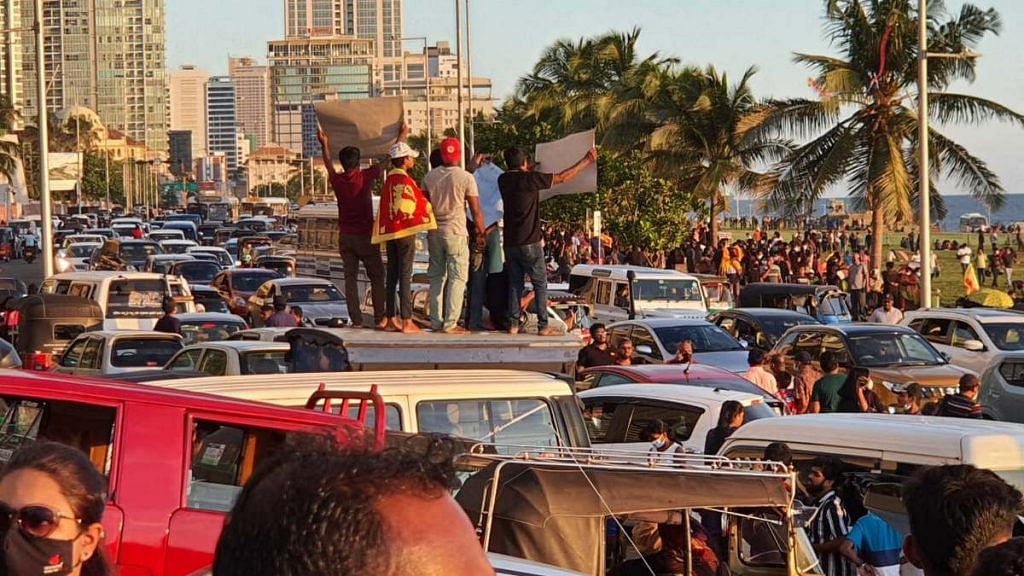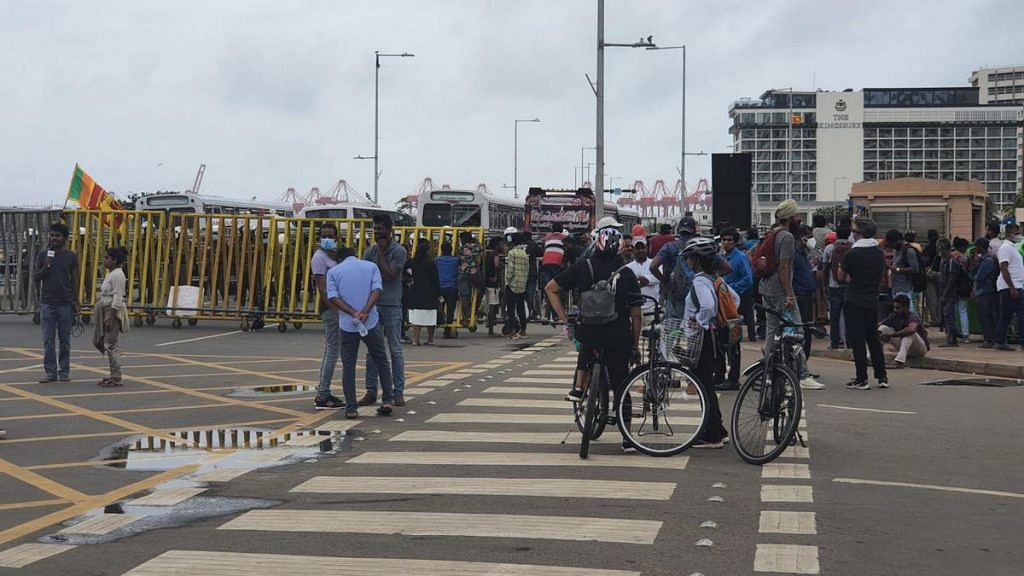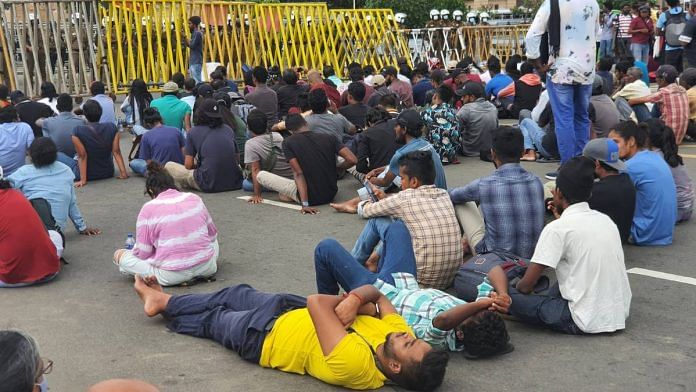Colombo: Less than a fortnight after massive protests drove former Sri Lanka President Gotabaya Rajapaksa from his palace into exile, the carnival-like scenes of protesters rolling on his bed and splashing in the swimming pool have been replaced by security personnel and workers trying to bring back order.
The broken metallic fences of the presidential secretariat have been replaced, and the black, red, yellow spray paint on the front wall of the nearby prime minister’s residence, Temple Trees, has been painted over in pristine white.
The new President, Ranil Wickremesinghe — whose own house was burned down by mobs — hasn’t managed to occupy the presidential residence yet, but calls for protest against him have fizzled.
“The general public is tired and energy levels are dipping,” said Nuzly Hameem, a civil engineer by profession and a protest representative. “They are focusing on issues like food and fuel crisis, instead of gathering at protest sites.”
Galle Face, where the presidential secretariat is located, was the nerve centre of Sri Lanka’s protests, which started in April amid a spiralling economic crisis and drew huge crowds. However, of late, fewer and fewer people have been showing up. The drop in numbers was evident even before the Sri Lankan army raided a protest site last Friday near the secretariat and allegedly attacked journalists and protesters.

The last time there was a notable protest gathering in Colombo was 13 July, when hundreds of protesters congregated and then stormed into then-prime minister Wickremesinghe’s office. He had later described the protesters as “fascists,” and declared a state of emergency.
On 20 July, a gathering at the presidential secretariat to watch the result of the secret ballot in Parliament to elect a new president saw just about 100 people. The turnout was similar at a 22 July silent protest near the barricades blocking off the presidential secretariat, following the military raid.
A gathering planned to mark the 1983 communal violence against Tamils and another protest at Galle Face on 25 July also drew thin support.
Emotions here are mixed.
While some protesters say the agitation may have outlived its usefulness, others hold out hope that it will revive and pose a serious challenge to Wickremesinghe, installed first as PM in May and then as president, who they believe lacks public support.
Also Read: Sri Lanka army raids protest site near Presidential Secretariat. Protesters, journalists ‘attacked’
‘Should have ended on a winning note’
At the peak of protests in April, Galle Face had the electric atmosphere of a street fair with packed crowds and rousing bursts of Papare — a trumpet-based Sri Lankan genre of music.
Now, the only permanent protesters at Galle Face are those still holding their ground in tents set up at ‘Gota Go Village’ within a piece of land the government designated in 2020 as a site for protests.
“We should have stopped when President Gotabaya resigned,” one tired protest representative said. “That would have meant we ended on a winning note.”
The sense of “defeat” has been exacerbated by last week’s “military crackdown”.
“Fewer people are coming to the Galle Face protest site because people are afraid and traumatised after the military and police attack on protesters in the early hours of last Friday,” said Father Jeewantha Peiris, a Catholic priest who has become one of the most prominent faces of Sri Lanka’s protest movement.

“Around 1am last Friday, I too was not allowed to enter Galle Face when I wanted to visit the protest site. Two boys who were with me were brutally beaten with poles by the forces,” he alleged, adding that food donations to the Galle Face protest site have been “discouraged by the government through informal means”.
Activist Vraie Cally Balthazaar also said there is “some apprehension of impending violence” against the protesters, and they would need time to regroup and gather up resources.
“We have lost so many things after tents close to the presidential secretariat were cleared away,” she said.
The protesters had faced an attack from alleged supporters of Mahinda Rajapaksa on 9 May too, she added, but a military raid was “different” and more intimidating for ordinary citizens.
Nevertheless, many say that the protests are far from over.
‘Just a lull’
A “lull” should not be seen as a permanent end to the protests, Hameem said, pointing to the fact that the agitation had abated even when Ranil Wickremasinghe was sworn in as PM on 12 May.
“People wanted to give him a chance [then], but protests eventually started again in early July. Likewise, this time, too, people want to give Ranil a chance to improve economic conditions. But if things don’t improve, expect another rise in the protest movement soon,” Hameem said.
Peiris said the movement is “lying low” for now, but people would continue to register their protest. A change in strategy was also in the offing, he added.
“Our focus now is to encourage and organise protests at hyperlocal and regional levels without calling people to Galle Face,” he said. “Other protest representatives will now start meeting political leaders, opposition party leaders and ambassadors to discuss and form next action steps.”
(Edited by Asavari Singh)
Also Read: Charred coconut shell stoves, cycling — 5 hacks helping Sri Lankans survive economic crisis



